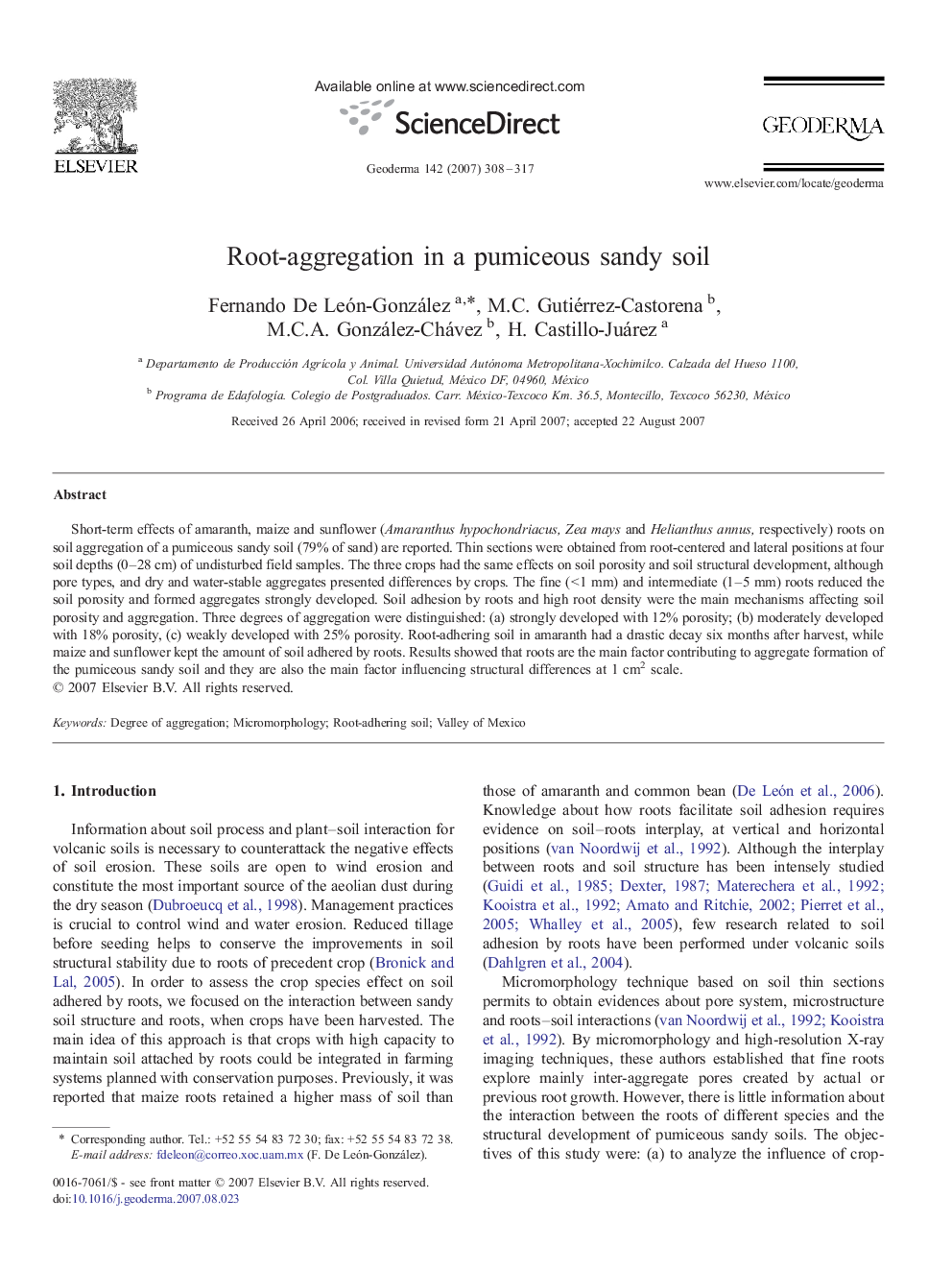| Article ID | Journal | Published Year | Pages | File Type |
|---|---|---|---|---|
| 4575323 | Geoderma | 2007 | 10 Pages |
Short-term effects of amaranth, maize and sunflower (Amaranthus hypochondriacus, Zea mays and Helianthus annus, respectively) roots on soil aggregation of a pumiceous sandy soil (79% of sand) are reported. Thin sections were obtained from root-centered and lateral positions at four soil depths (0–28 cm) of undisturbed field samples. The three crops had the same effects on soil porosity and soil structural development, although pore types, and dry and water-stable aggregates presented differences by crops. The fine (< 1 mm) and intermediate (1–5 mm) roots reduced the soil porosity and formed aggregates strongly developed. Soil adhesion by roots and high root density were the main mechanisms affecting soil porosity and aggregation. Three degrees of aggregation were distinguished: (a) strongly developed with 12% porosity; (b) moderately developed with 18% porosity, (c) weakly developed with 25% porosity. Root-adhering soil in amaranth had a drastic decay six months after harvest, while maize and sunflower kept the amount of soil adhered by roots. Results showed that roots are the main factor contributing to aggregate formation of the pumiceous sandy soil and they are also the main factor influencing structural differences at 1 cm2 scale.
